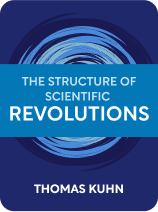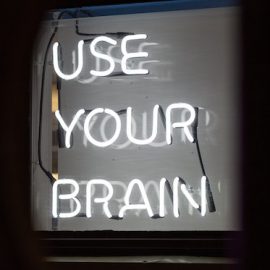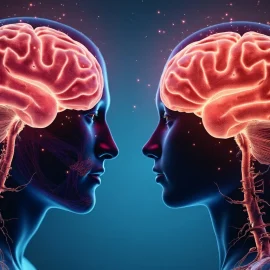

This article is an excerpt from the Shortform book guide to "The Structure Of Scientific Revolutions" by Thomas Kuhn. Shortform has the world's best summaries and analyses of books you should be reading.
Like this article? Sign up for a free trial here .
What are the four rules of science? What rules do scientists have to abide by when they construct their theories?
According to Thomas Kuhn, the author of The Structure of Scientific Revolutions, rules of science fall into four major categories. These include scientific theories, instruments, high-level concepts, and personal rules for scientists.
Keep reading to learn about the four rules of science, according to Thomas Kuhn.
What Are the Four Rules of Science?
One of the most notable things about conventional or normal science (as opposed to revolutionary science) is that it doesn’t try to find new information, but only to confirm and refine current beliefs. Results that don’t fit into the paradigm are often set aside, and sometimes don’t make sense until much later.
However, normal science is still challenging—it’s often about how to get the expected results, rather than the results themselves. It’s like solving a jigsaw puzzle: Even though you already know what the outcome is supposed to be, the enjoyment comes from figuring out how to achieve it.
A key aspect of puzzles is that they must have solutions. Therefore, scientific fields will tend to look for problems that—if their paradigms hold true—are solvable. Problems outside of that scope will often be dismissed as belonging to a different field of science, or as just too obscure or troublesome to bother with.
Also, both puzzles and scientific problems must have rules by which those solutions can be found. For example, in the eighteenth century, scientists consistently failed to apply Newton’s laws of motion to the movement of the moon. Some scientists suggested replacing one of his mathematical laws with a different one that would work for the problem—however, that would have been changing the paradigm, and thus breaking the rules. Finally, in 1750, a scientist found the solution using Newton’s laws as they were written, and so the paradigm remained in effect.
Rules of science fall into 4 major categories. The first is scientific laws and theories, such as Newton’s Laws of Motion. The second is which scientific instruments may be used to study the paradigm, and how.
The third category is broad, high-level concepts. For example, in the mid 17th century, scientists believed that the entire universe—including all natural forces—was made of particles. They believed that every natural phenomenon could be explained by particle size and shape, how they moved, and how they interacted with each other. Therefore, the “rules of science” of that time would force them to explain any findings in those terms, such as describing light as tiny, solid bodies that travel in a straight line and have some minuscule amount of momentum.
The fourth category is personal rules for scientists. Unlike the previous categories, this tends to be the same across all fields of study. In short, scientists must be committed to examining and understanding the world, with special focus on some particular part of it. If their studies reveal anomalies, either the methods or the theories must be refined.
Sometimes There Are no Rules
While historians can generally find the paradigms of a given community fairly easily, finding the specific rules that community followed is often much harder. For one thing, scientists may follow the same paradigm, but disagree on how to interpret it. Also, like professionals in any field, scientists have experience and knowledge that they either don’t communicate clearly or don’t realize others lack. Therefore, historians sometimes don’t recognize or understand the rules of the time because they’re couched in unfamiliar terms and assumptions.
Finally, just because there is a paradigm doesn’t mean that there is necessarily a set of rules to go with it. Sometimes historians are looking for something that simply isn’t there. However, even when paradigms lack specific rules, they can still restrict the scientific field by guiding the work.
To illustrate this point, consider a question asked by the philosopher Ludwig Wittgenstein. He wondered how we know to apply terms like “chair,” or “game,” to something we’ve never seen before.
The brief version of the answer is that we apply those terms to things that resemble other things we know by those names. For example, if something has legs and a seat and a back, then we’ll probably call it a chair because it looks a lot like other chairs. This holds true even if it’s a type of chair we’ve never seen before.
Applying Wittgenstein’s idea to science, scientists following the same paradigm will end up using the same (or similar) terms and methods in their work. Just like we can clearly identify a chair despite there being no concrete laws of “chair-ness,” we can identify a single paradigm by similarities in research methods and the language they use.
There are several reasons to believe that paradigms guide work even when no fixed rules are in place. First, there’s the difficulty of finding concrete rules in some communities, which we’ve already discussed. Second, scientists aren’t given lists of rules and theories to memorize—they pick them up naturally through study and learning how to apply them in practice. In other words, even when such rules exist, they aren’t formalized.
Third, as long as there is a universally-accepted paradigm—or close enough to one—normal science doesn’t need established rules. The scientists all agree on the problems and solutions that their field has, so they’ll naturally work in the same or similar ways, as was demonstrated in the analogy to Wittgenstein’s question. However, the other side of this coin is that normal science does need concrete rules when a paradigm is unstable; in other words, just before and during a scientific revolution.
Finally, normal science—even within the same field—isn’t completely uniform. There could be any number of specialties and subspecialties that, to an outsider, seem to fall under the umbrella of one particular field.
Sometimes a scientific revolution can actually be very small, affecting only a particular specialty within a field. In this case, the conventional rules of science do not apply. There can’t be scientific rules that affect the entire field, when paradigms can change for subsets of that field. The next section will go into detail about subsets within fields and how paradigms can affect them differently.
Anomalies and Discoveries
Normal science doesn’t look for anomalies or unexplained phenomena, but it often finds them anyway; in fact, science seems to be uniquely good at finding unexpected things. In order to mesh those apparently contradictory facts, we have to assume that working within a paradigm is an effective way to change that paradigm.
Working by a particular set of rules, then finding facts or theories that don’t fit those rules, requires that the rules of science within the field must then be changed. Far from unusual or contradictory, this may actually be an inevitable result of digging ever-deeper into a particular paradigm, trying to expand and clarify each tiny facet of it.

———End of Preview———
Like what you just read? Read the rest of the world's best book summary and analysis of Thomas Kuhn's "The Structure Of Scientific Revolutions" at Shortform .
Here's what you'll find in our full The Structure Of Scientific Revolutions summary :
- How scientific paradigms evolve and become replaced with new paradigms
- Why science is more about figuring out what isn't right
- How throwing out past achievements allows for scientific progress






